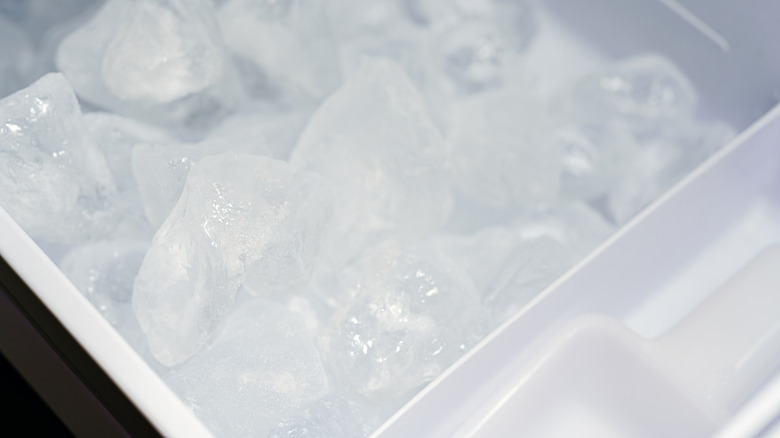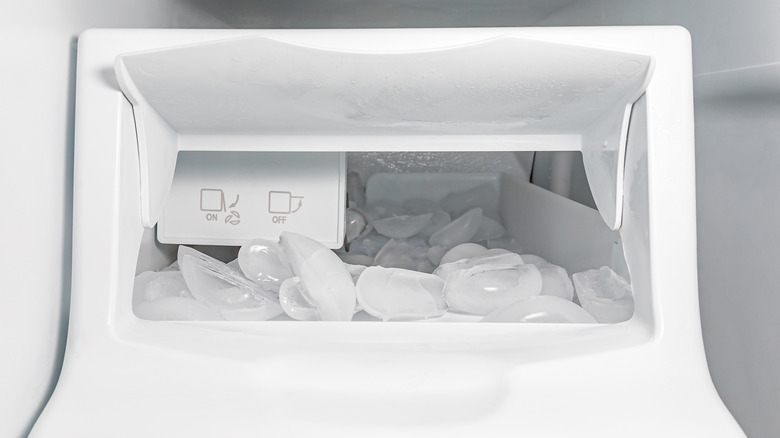How To Actually Clean That Filthy Ice Maker
Have you wondered what gunk might be hiding in the nooks and crannies of your ice maker? Yes, we're talking about that forgotten — but very crucial — appliance chugging away to fill up your glasses and chill your drinks. Have you noticed a strange taste in your ice or drink? A dirty ice maker might be the culprit. Don't worry: Cleaning it is actually pretty easy. According to USA Today, hard water can scale your ice machine with mineral deposits, and the usual household plagues, like dust and debris, can impact it too. No, your freezer isn't exempt.
You should probably clean your ice maker or ice trays more often than you might think: The general rule of thumb is twice a year. While cleaning your ice maker might sound daunting, the process is simple. After all, we're not talking about cleaning every part of the machine — only the removable ones. All you have to do is detach the icebox, follow the instructions for your refrigerator or ice maker, give the detachable parts a good scrub, and thoroughly dry everything before putting it all back into the freezer.
If this doesn't resolve any problems you're experiencing, remember that cleaning or replacing your refrigerator's water filter is another crucial maintenance step. An older filter, or one clogged with mineral build-up, might also produce strange-looking or tasting ice.
Step by step process for cleaning your ice maker
Forgetting to clean your ice maker happens to the best of us. While strange-tasting or looking ice is an obvious sign it needs cleaning, your machine has some other tells too. For instance, weird noises or problems producing ice could signal ice and mineral buildup. However, these could also mean the machinery has some bigger issues.
The first step to cleaning your ice maker is somewhat of a no-brainer: Make sure the machine is disconnected or shut off. This might mean you need to unplug your entire refrigerator if there isn't a dedicated switch for the ice machine. Next, you have to remove the icebox and empty it. Afterward, scrub the icebox with warm water and dish soap inside and out, then rinse it thoroughly. For best results, cycle and dispose of your first few batches of ice before using any.
You can use specially-designed cleaning products to remove tricky mineral deposits if needed. Non-toxic cleaners and de-scalers are sold online and in hardware stores. Afterward, ensure each part of the housing and icebox are completely dry before putting it back together. It might sound paradoxical, but you don't want anything to freeze and, thus, prevent your machine from successfully making new ice.

